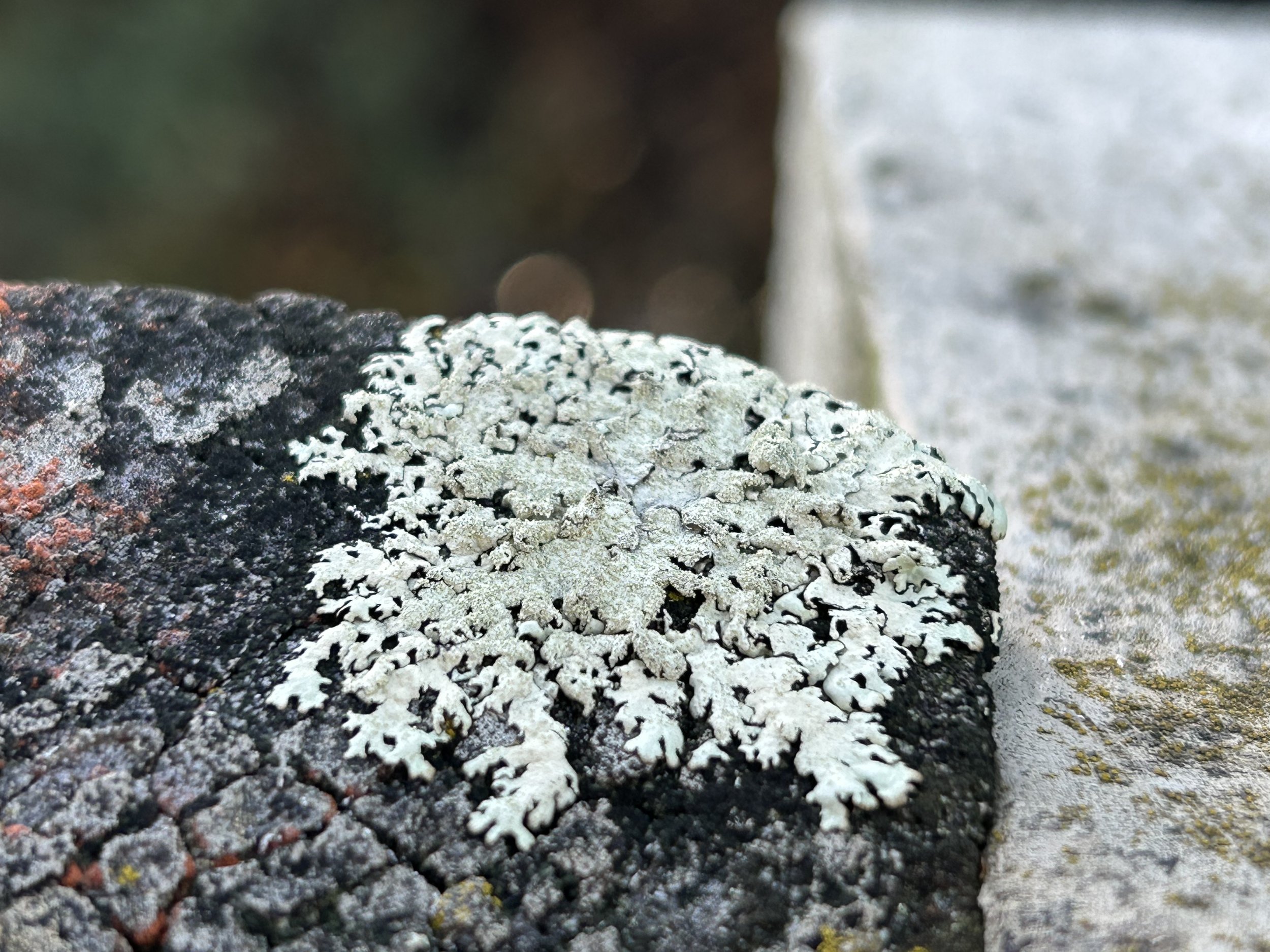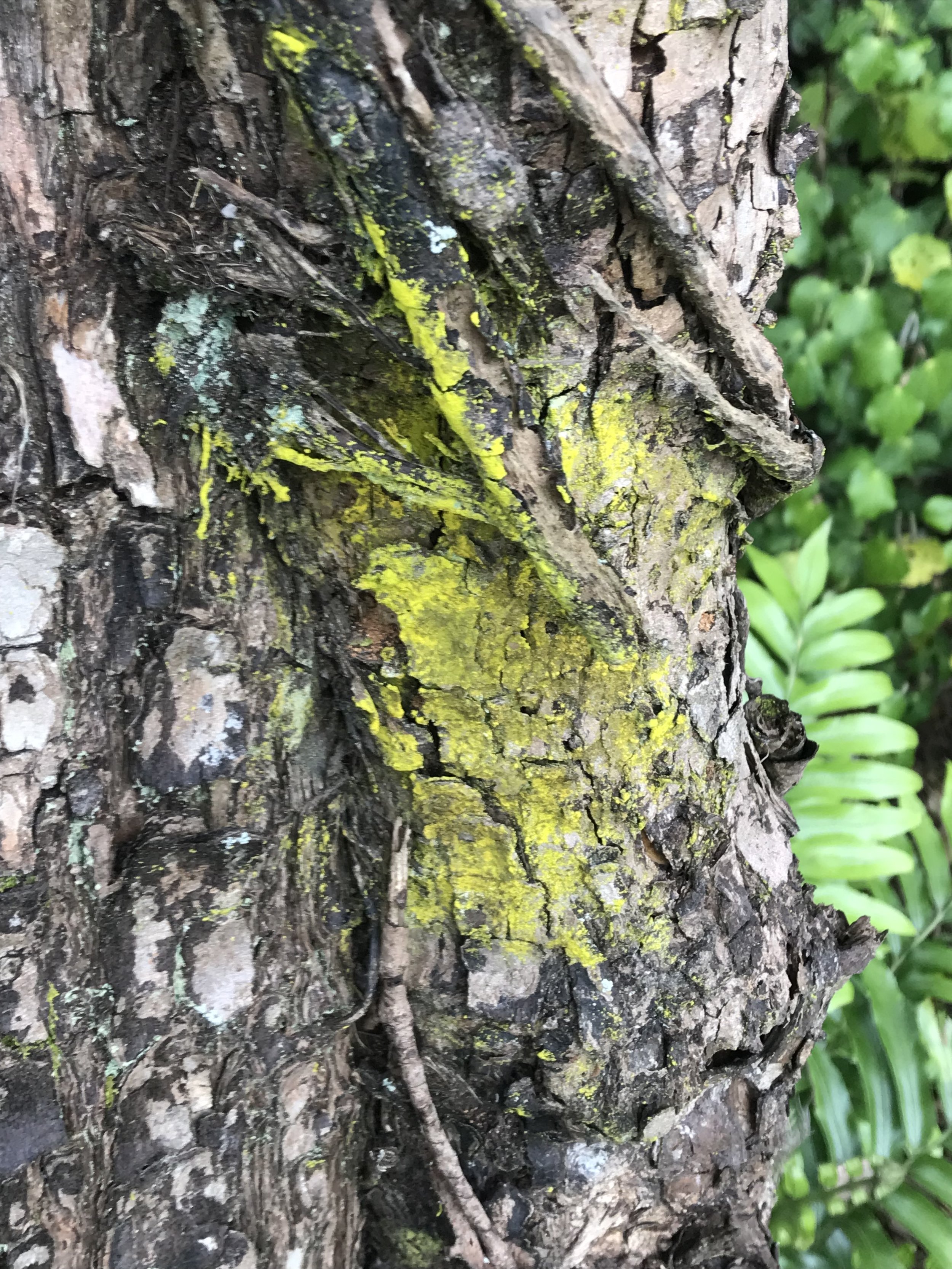Liking Lichen
Lichens are everywhere, often blending in to their surrounds. It's so easy to ignore them. But recently, I had half an hour to do a street loop walk near my house. As it was a walk I’d done so many times before, I sought inspiration to motivate me to get out the door. I quickly opened Annabel Streets 52 Ways to Walk at random. In the very last chapter, she writes about deep walking, and looking for fractals. That, I thought, I could do.
“In the cracks of pavements, in the fissured bark of fallen trees, under the thin skin of the earth, we can find entire universes.”
Golden-eye lichen Teloschistes chrysophtalmus photographed in the rain. Growing on a steel strut of a footbridge.
The little universes I found were lichens, mosses and ferns. Some on the struts of a foot bridge, others on the bark of old trees.
The lichens I found were fascinating. They were so varied in forms and colour, and it seemed they could grow on just about anything. I decided it was time to learn more about them. I got out my nature journal. Drawing helps me observe more closely and encourages me to ask questions about what I'm seeing.
Nature journal work in progress
Lichens are a partnership between a fungus and an alga or cyanbacterium. The fungus provides the structure and the alga or cyanbacterium provides food through photosynthesis.
I found a great resource Lichens of New Zealand by Dr Allison Knight published by the Otago Botanical Society. I was amazed to read that New Zealand has close to 2000 species - about 10% of the world’s lichens live here. I soon realised that identifying species was going to be difficult, but at least I could attempt to classify the lichens I found by the three main growth forms.
Foliose - flattened, leaf-like lobes, could be lifted off the surface on which it's growing
Fruticose - three-dimensional twiggy, shrubby or dangling structure
Crustose - a flattened crust which can't be separated from the substrate, can also be powdery
I found plenty of foliose lichens on my walk, but I had to look back through my photo library to find more fruticose and crustose examples.
Foliose - the yellow/orange lichen is Common Sunburst Lichen Xanthoria parietina, others as yet unidentified
Fruticose - Trumpet lichen Cladonia sp., Golden-eye lichen, Old man’s beard lichen Usnea sp., unknown
Crustose - Dibaeis arcuata (note the stalked fruiting bodies on this one), Concentric boulder lichen Porpida crustulata, unknown, Gold Dust Lichen Chrysothrix sp.
For more on lichens see:
https://www.nzpcn.org.nz/flora/non-vascular/lichens/
For more on fractals in nature, with ideas for children and educators

















